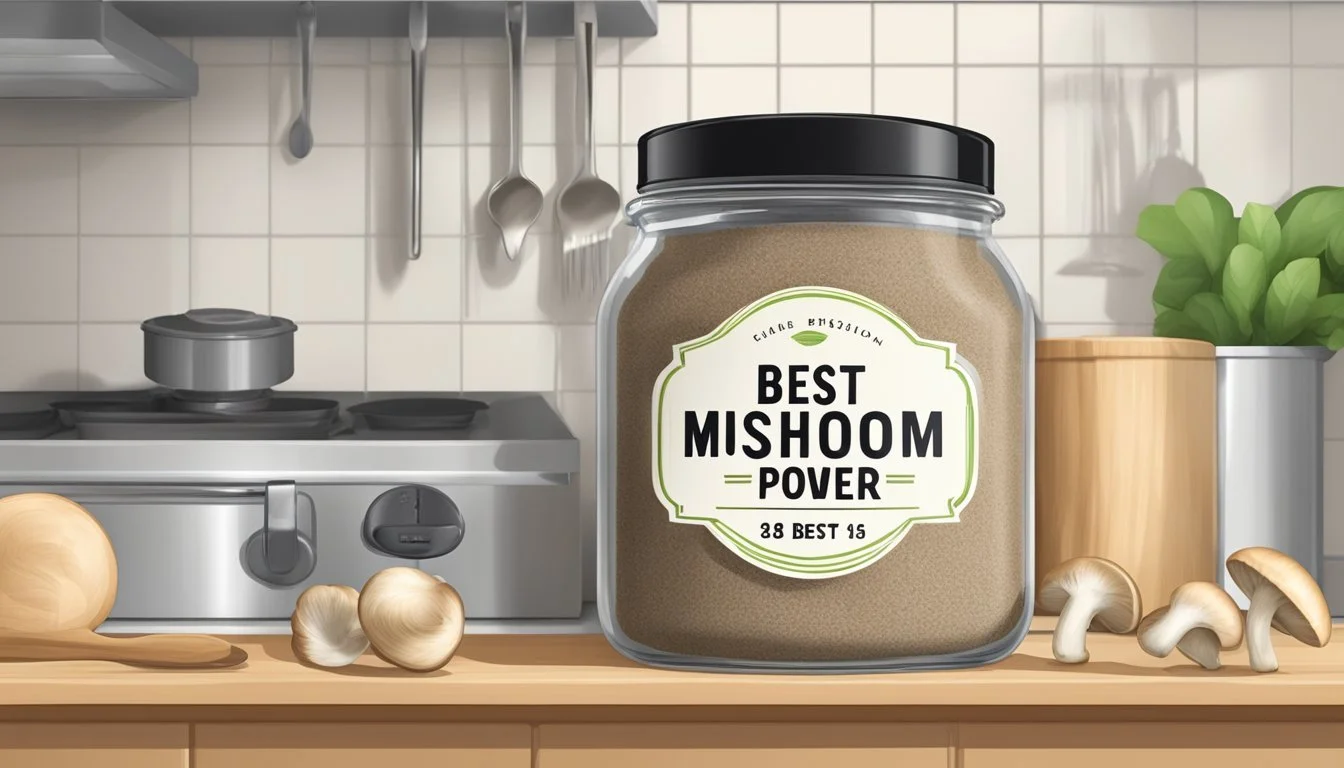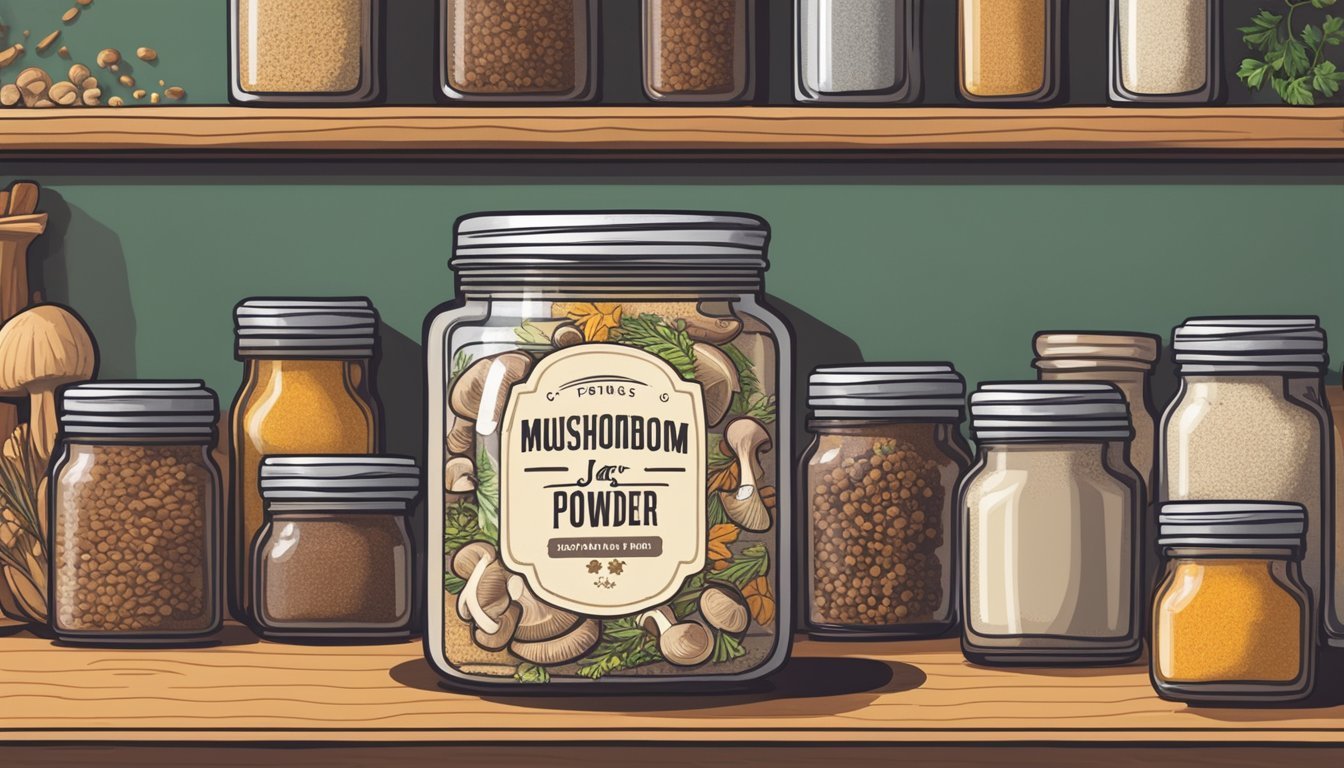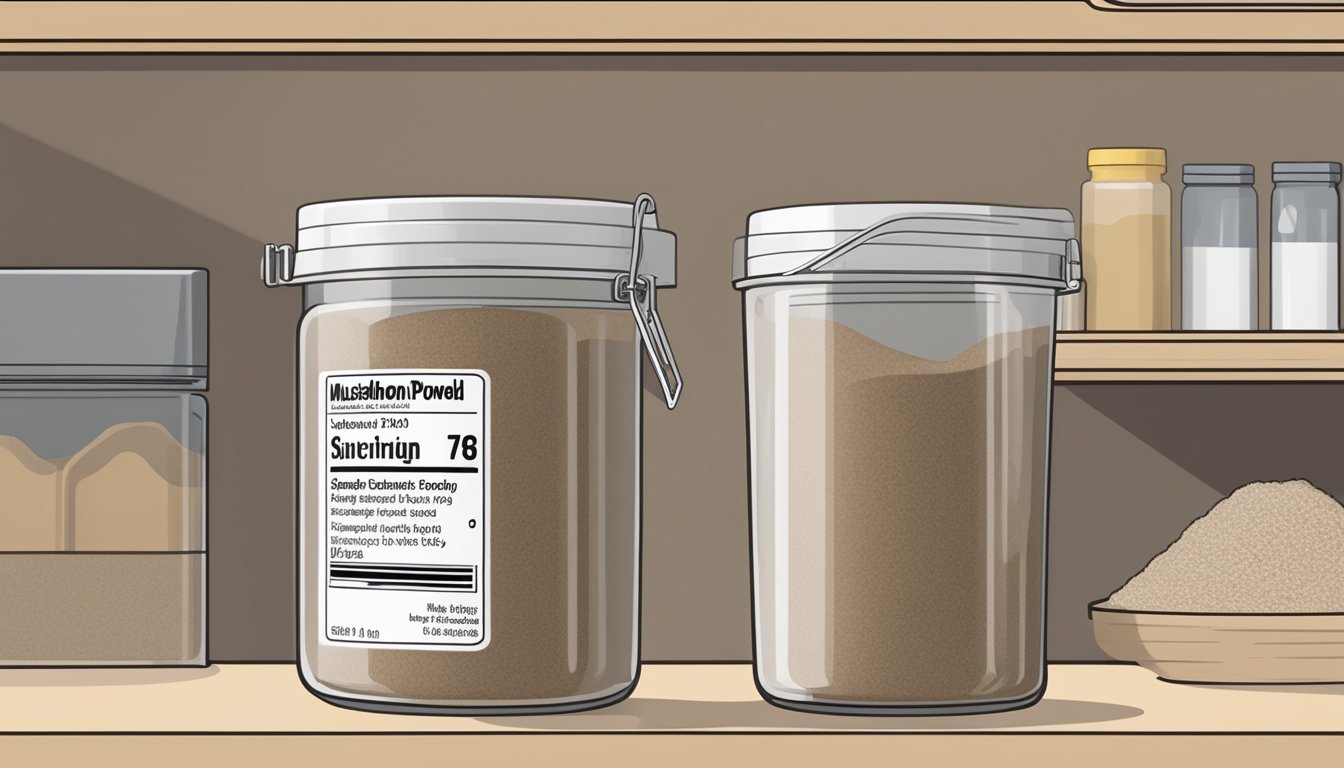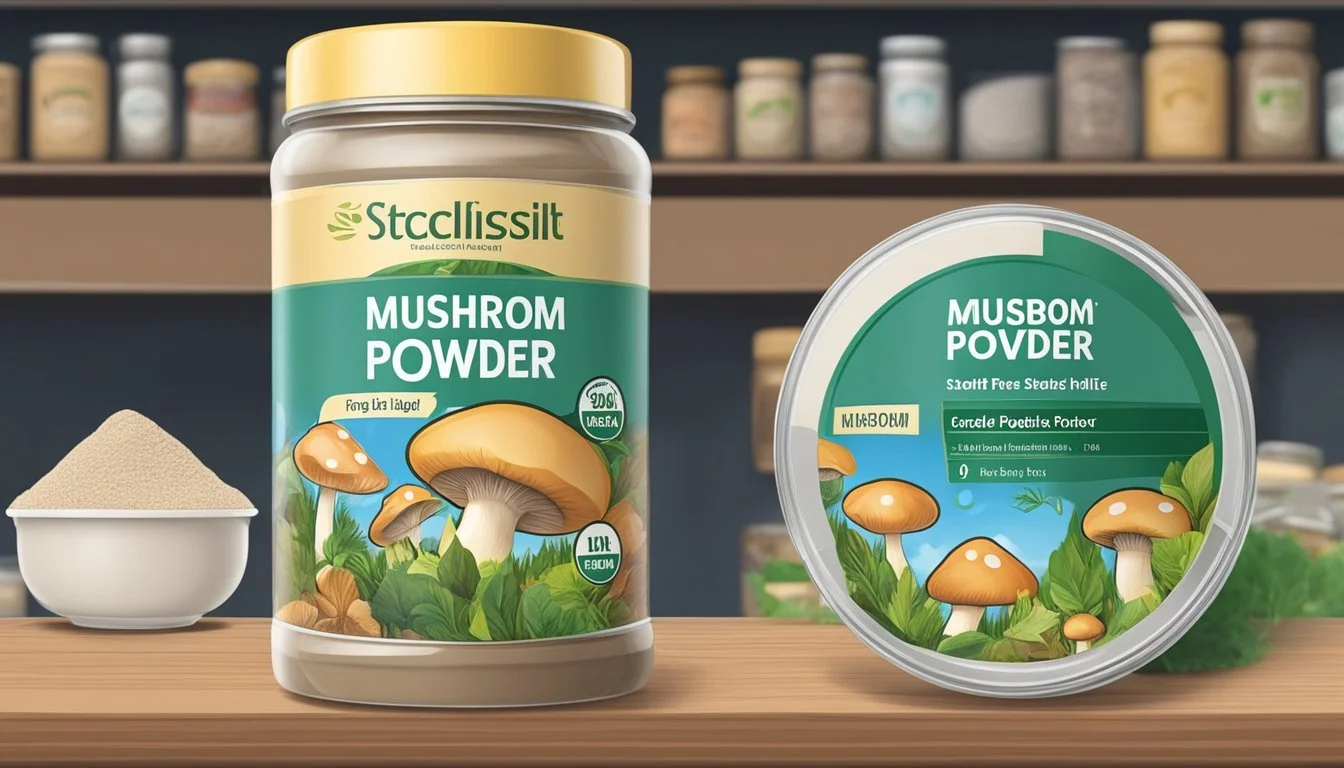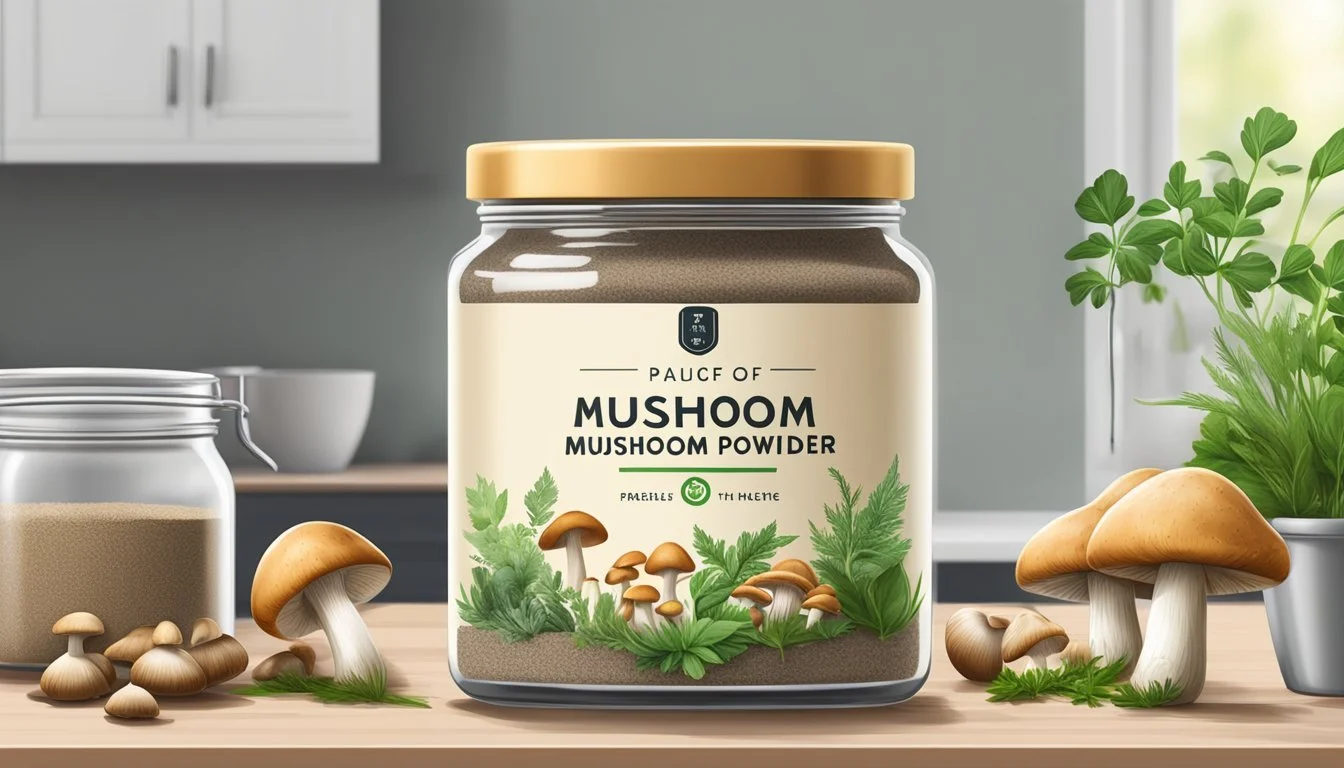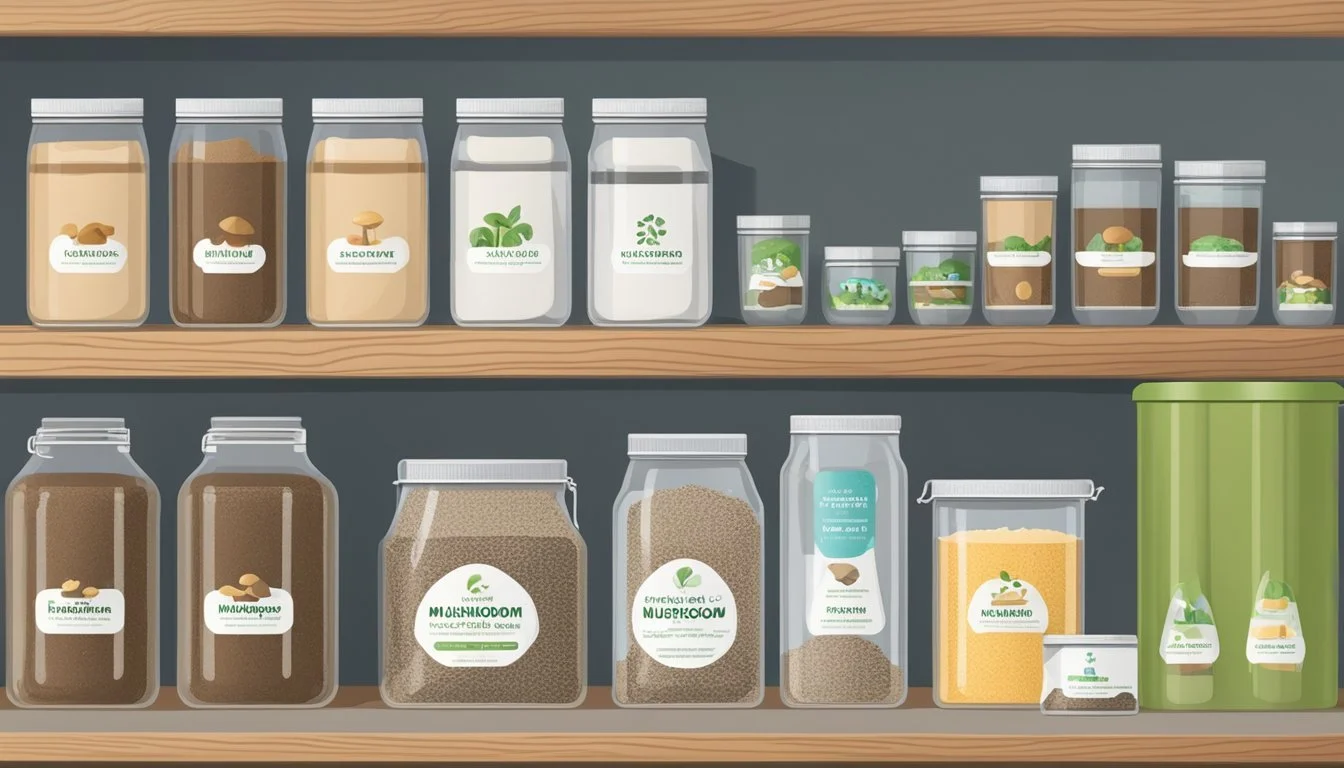How Long Does Mushroom Powder Last?
Shelf Life and Storage Tips
Mushroom powder, a versatile kitchen staple, is made by grinding dried mushrooms into a fine dust. Its concentrated flavor enhances a variety of dishes, from soups and sauces to rubs and seasonings. The shelf life of mushroom powder is an important consideration, as it affects both its taste and nutritional value. Proper storage is key to maintaining the quality of mushroom powder: it should be kept in an airtight container, placed in a cool, dry area away from direct sunlight and heat sources.
Nutritionally, mushroom powder retains many of the vitamins and minerals found in fresh mushrooms, albeit in a dehydrated form. While the dehydration process can cause some loss of nutrient content, the powder still remains a good source of these nutrients. However, the longevity of mushroom powder’s nutritional benefits is directly linked to its storage conditions. With optimal storage, mushroom powder can maintain its quality for months, although it is best consumed sooner rather than later to enjoy its full flavor profile and nutritional benefits.
Understanding the shelf life and storage recommendations ensures that the mushroom powder remains a valuable and healthful addition to any pantry. Consumers can confidently use this concentrated ingredient, knowing it will provide the desired culinary impact and nutritional advantage when stored correctly and used within an appropriate time frame.
Understanding Mushroom Powder
Mushroom powder is a versatile ingredient that is derived from dehydrated mushrooms. It is valued for its nutritional content, rich umami flavor, and earthy essence. This section details the basic composition and the different types of mushroom powders to better understand their uses and benefits.
Basics of Mushroom Powder
Mushroom powder is obtained by drying mushrooms and grinding them into a fine dust. This process concentrates the mushrooms' inherent earthy flavor and umami, making them a potent flavor additive for a variety of foods. Nutritionally, mushroom powder is robust, with a good profile of protein, vitamins, and minerals. Due to its dry form, it possesses a long shelf life, making it an ideal pantry staple.
Mushrooms Nutrition Benefits Shiitake High in B Vitamins, promotes heart health Chaga Antioxidant-rich, immune support Lion’s Mane Cognitive and nerve health Reishi Boosts immune system, stress relief Cordyceps Increases stamina and energy levels Porcini High in protein and fiber
Different Types of Mushroom Powder
Mushroom powders can differ significantly depending on the type of mushroom used. Each variety has unique properties and health benefits.
Shiitake mushroom powder is known for its contribution to cardiovascular health due to its high B vitamin content.
Chaga mushroom powder is prized for its antioxidants and aids in immune system support.
Lion’s Mane powder is sought for its potential to improve cognitive function and nerve health.
Reishi mushroom powder is often used for its calming effects and ability to relieve stress.
Cordyceps powder helps enhance energy and stamina levels.
Porcini powder stands out for its protein content and adds an intense flavor to dishes.
Each type carries its distinct flavor profile, from the strong umami taste of shiitake to the nuttier, earthy tones of porcini. When incorporating into recipes, one can take advantage of these flavors to enhance meals without overpowering them.
Proper Storage Techniques
Proper storage maximizes the shelf life of mushroom powder by preserving its flavor and preventing spoilage. Employing the best practices in storage involves using appropriate containers and understanding the significance of the storage environment.
Storing in Airtight Containers
Mushroom powder should be stored in airtight containers to protect it from moisture and air exposure. Appropriate options include:
Glass jars with tight-fitting, screw-on lids, such as Mason jars.
Vacuum-sealed bags that remove air and seal the powder effectively.
For added protection, ensuring that the sealer on a glass jar remains intact and checking vacuum-sealed bags for potential leaks is crucial.
Ideal Storage Locations
Selecting the right location for storing mushroom powder can greatly extend its usability. The powder should be kept in a:
Pantry, which provides a consistently dry and dark place.
Cabinet away from direct light, heat sources, and appliances that can emit warmth.
Avoid places where the powder might be exposed to strong odors since it can absorb them, thus altering its taste and aroma.
Importance of Temperature and Humidity
Temperature and humidity levels play pivotal roles in maintaining the quality of mushroom powder. Store mushroom powder in conditions that are:
Cool and dark to preserve its potency.
Room temperature or below is usually sufficient to maintain quality over time.
For long-term storage, considering refrigeration or freezer storage can significantly prolong shelf life. When opting for a refrigerator or freezer, ensure the powder is in a moisture-proof container to prevent clumping from condensation.
Shelf Life Insights
Mushroom powder offers a convenient way to store and use mushrooms long-term, but its longevity is influenced by several factors. Proper storage is crucial in preserving mushroom powder's quality and extending its shelf life.
Factors Affecting Shelf Life
Storage Conditions: The shelf life of mushroom powder heavily depends on the way it's stored. An airtight container is essential to prevent exposure to moisture and air, which can lead to spoilage. Additionally, it should be stored in a cool, dry place, away from direct sunlight and sources of heat, as both can degrade the quality of the mushroom powder and reduce its shelf life.
Temperature: A stable, low temperature is ideal for the preservation of mushroom powder. Fluctuating temperatures can increase the risk of spoil. Keeping it at room temperature is generally recommended, but if the ambient temperature is high, storing mushroom powder in the refrigerator can be beneficial.
Recognizing Spoilage
Visual and Olfactory Clues: It's important to know how to recognize signs of spoilage. Discoloration, mold, or any form of rot can indicate that the mushroom powder is no longer safe to consume. Another clear sign of spoilage is an off odor, which is a strong indication that the mushroom powder has been compromised.
Expiration Date: While an expiration date is not always a perfect indicator of freshness, it should still be respected as a guideline. If the mushroom powder is past its expiration date or shows any signs of spoilage mentioned earlier, it should not be used.
Handling and Usage
When using mushroom powder, understanding the proper handling and usage is essential for maintaining its quality and flavor. The techniques for incorporating mushroom powder into recipes vary but always prioritize proper measurement and appropriate culinary application.
Rehydrating and Cooking
Mushroom powder generally does not require rehydration prior to use. However, if a recipe specifically calls for rehydrated mushrooms, one can mix the powder with a small amount of warm water, creating a paste that can then be added to dishes. For cooking purposes, it can be directly sprinkled into soups and sauces where it will incorporate fluid from the dish, enhancing the flavor profile.
Incorporating Into Recipes
Mushroom powder is versatile and can be seamlessly added to an array of dishes. Here are a few specific ways to use it:
Soups and Sauces: Stir directly into the mixture to thicken and add umami flavor.
Pasta and Risottos: Mix into the dish during the cooking process for a rich, earthy taste.
Seasoning: Combine with herbs and spices to create rubs for meats or seasoning for vegetables.
Baking: Incorporate into bread dough for an extra layer of flavor.
Stir-fries: Add during cooking to enhance overall depth of flavor.
Omelet: Sprinkle into eggs before cooking for a mushroom-infused breakfast.
For best results, add mushroom powder early in the cooking process to allow its flavor to meld with the other ingredients.
Nutritional and Culinary Benefits
Mushroom powder offers a blend of nutritional richness and distinctive flavors that can elevate a variety of dishes. It stands out not only for its health-promoting properties but also for its ability to enhance both the flavor profile and texture of culinary creations.
Health Benefits of Mushroom Powder
Mushroom powder is a dense source of nutrition. It typically contains a high level of protein, vital B vitamins such as Niacin, Riboflavin, and Pantothenic Acid, as well as essential minerals like Selenium. The nutritional value of mushroom powder is notable for its fiber content and low sodium presence, making it a beneficial ingredient for longevity and overall health.
Protein: Integral for body maintenance and repair
Vitamins: Required for various bodily functions, including energy production
Minerals: Contribute to antioxidant defenses and metabolic health
Fiber: Supports digestive wellness
This nutrient-dense powder fortifies the body's natural immune functions and fosters a balanced state. With these attributes, it caters to those focused on incorporating wholesome, plant-based foods into their diet.
Enhancing Flavor and Texture
Culinary mushrooms are praised for their meaty and earthy flavor, which imparts a umami essence to dishes — a savory taste that is deeply satisfying. When transformed into powder, these flavors become concentrated, allowing for their easy integration into a variety of recipes. Mushroom powder can enhance the texture of a dish, offering a thicker consistency and adding depth to sauces, soups, and stews.
Flavor: Adds an umami, meaty and earthy dimension to meals
Texture: Can be used to create a more robust experience in the mouthfeel of dishes
Chefs and home cooks appreciate mushroom powder for its versatility and its ability to intensify the sensory experience of eating, contributing to richer, more complex flavors and satisfying textures in both vegetarian and non-vegetarian cuisines.
Special Considerations and Tips
Proper handling of mushroom powder from dehydration to storage ensures optimal shelf life and safety. The following points aim to educate on the best practices to maintain the potency and minimize the risks when dealing with mushroom powder.
Dehydration Process
The method of dehydration is critical for the quality and preservation of mushroom powder. Using a dehydrator yields consistent results by ensuring a thorough removal of water content, which is essential to prevent spoilage. One must ensure that the mushrooms are sliced uniformly before they are dehydrated to transform into fine powder.
Maximizing Shelf Life
To extend the shelf life of mushroom powder, maintaining proper storage conditions is vital:
Keep it dry: Store in an airtight container to prevent moisture absorption.
Minimize exposure to air: Consider using vacuum-sealed bags to reduce oxygen levels.
Cool and dark environment: Store in a pantry or cupboard away from direct sunlight and heat sources.
Note: These precautions can help mushroom powder remain potent and safe to consume for 6 months to 2 years, contingent on storage quality.
Food Safety Precautions
Before consumption, one must inspect mushroom powder for signs of spoilage, and any off odors or changes in color may indicate contamination. Rinsing is not applicable, so visual and olfactory checks are essential for food safety. It's crucial to discard any questionable powder to avoid health risks.
Economical and Sustainable Choices
When considering the purchase and storage of mushroom powder, one must consider both economical and sustainable options. They need to assess bulk purchasing benefits and the most effective long-term storage methods to maximize shelf life.
Considerations for Bulk Purchases
Buying mushroom powder in bulk can be significantly more economical. Consumers save money by purchasing larger quantities at a reduced cost per unit. However, it is essential to consider the shelf life of the product against the volume purchased. Bulk purchases are advisable only if the consumer can utilize the mushroom powder before it deteriorates in quality.
Economical: Bulk purchases reduce the cost per unit.
Shelf Life: Larger quantities should be used within the product's shelf life.
Long-Term Storage Options
To extend the shelf life of mushroom powder, proper storage is key. Mushroom powder should be kept in airtight containers to prevent moisture and other contaminants. For extended preservation, freezing the powder in vacuum-sealed bags can be effective, as it minimizes exposure to air and moisture.
Airtight Containers: Storing in a dry, cool place in tightly sealed containers prevents moisture ingress.
Freezing: Mushroom powder can be frozen to prolong shelf life. Using vacuum-sealed bags keeps the powder fresh for longer periods.
Refrigeration: In a less extreme approach, storing the powder in the refrigerator in airtight containers or plastic bags with paper towels to absorb any moisture can also be beneficial.
Diving Into the World of Mushrooms
Mushroom powder has become a culinary favorite, providing rich flavors and versatility to various dishes. Whether used for its unique taste or as a meat substitute in vegan diets, the powder form preserves the essence of fresh mushrooms.
Popular Mushroom Varieties
Mushrooms come in a diverse range of varieties, each with its own distinct characteristics and culinary uses. Shiitake mushrooms are known for their rich, umami flavor and meaty texture, making them a staple in Asian cuisine. Porcini mushrooms, revered in Italian cooking, impart a nutty taste to dishes. The common button mushroom, though milder in flavor, offers a versatility that's unmatched—they enhance nearly any dish from pizzas to soups. When dried and ground into powder, these varieties retain their distinctive flavors, enabling cooks to infuse dishes with concentrated mushroom taste.
Variety Characteristic Flavor Common Uses Shiitake Umami, woody Asian dishes, vegan cooking Porcini Nutty, earthy Italian cuisine, soups Button Mushroom Mild, versatile General cooking, roasting
Unique Mushroom Flavors for Cooking
Mushroom powders are not merely a substitute for fresh mushrooms; they are a cooking ingredient in their own right. They work exceptionally well in situations where one needs to impart a deep, earthy flavor without altering the texture of the dish. For example, shiitake mushroom powder works wonders in vegan dishes, delivering a savory punch that mimics the richness usually provided by meat. Porcini mushroom powder, on the other hand, is often blended into coffee or teas, introducing an unexpected yet pleasing flavor twist. Similarly, the powders can serve as a hearty addition to roasting rubs or even to boost the taste of a simple broth. These powders provide a concentrated mushroom taste that can elevate even the simplest of dishes.
Cooking applications:
Enhances soups and stocks
Boosts savory notes in vegan recipes
Adds rich flavor to roasts and rubs
Complements beverages, like coffee and teas

